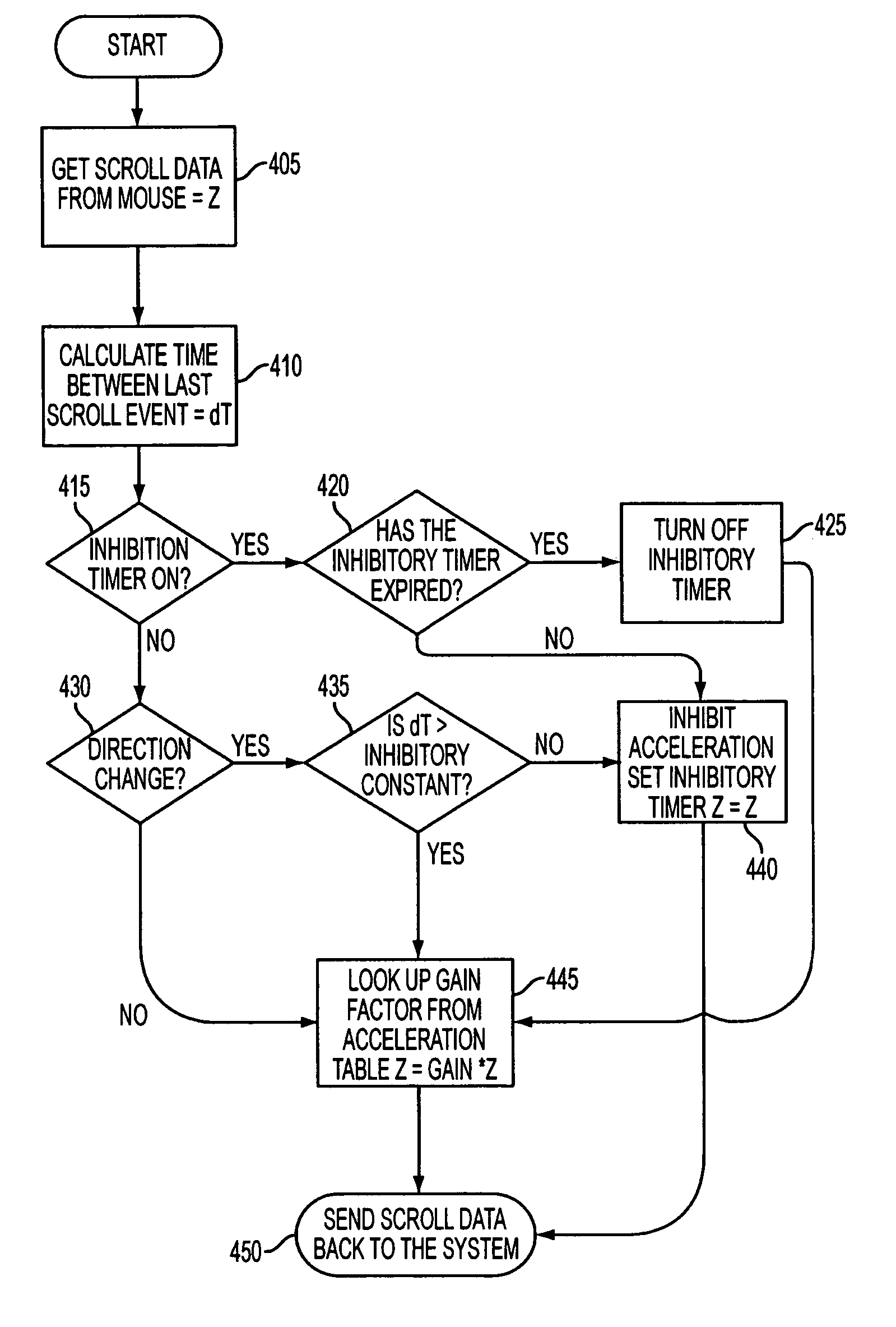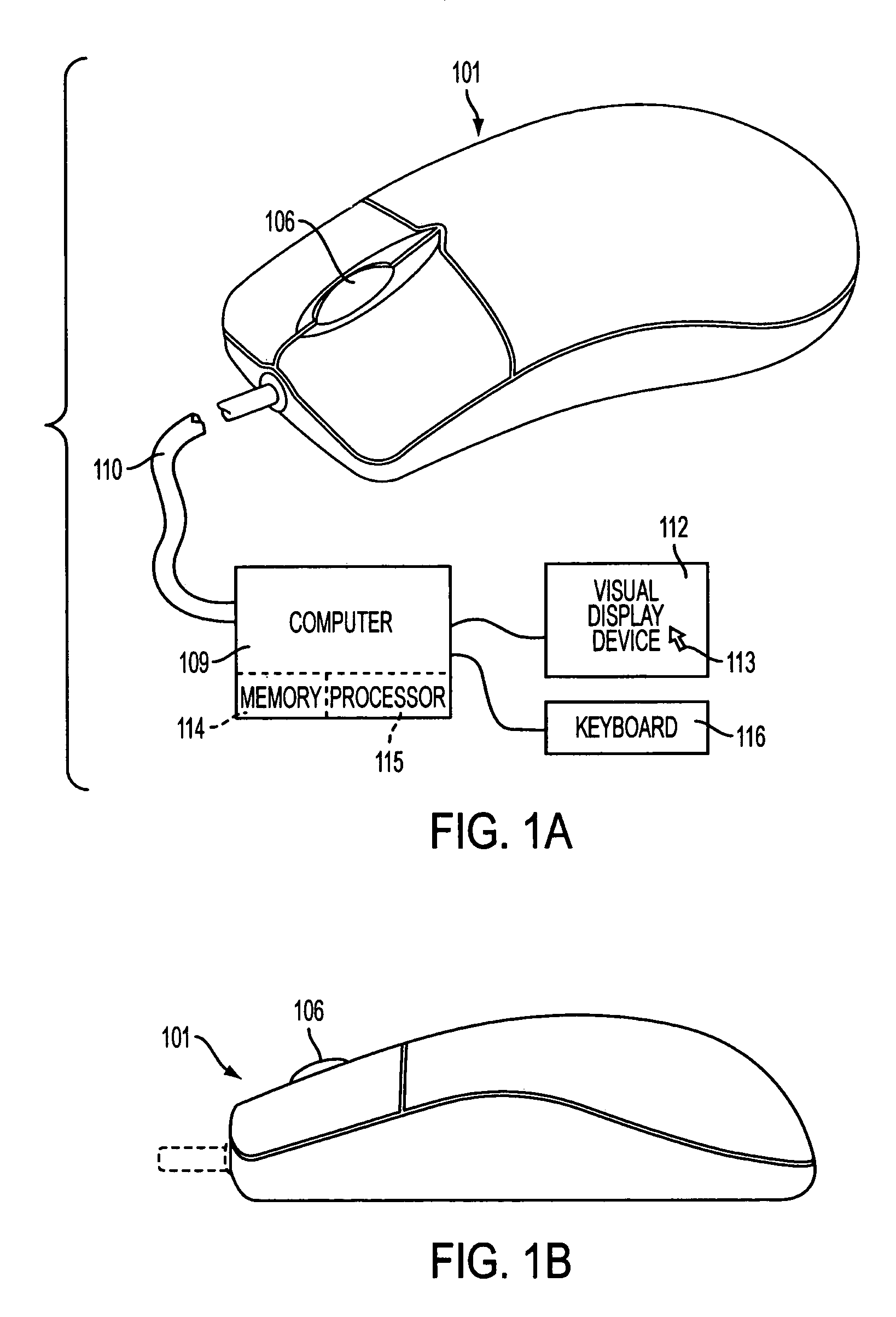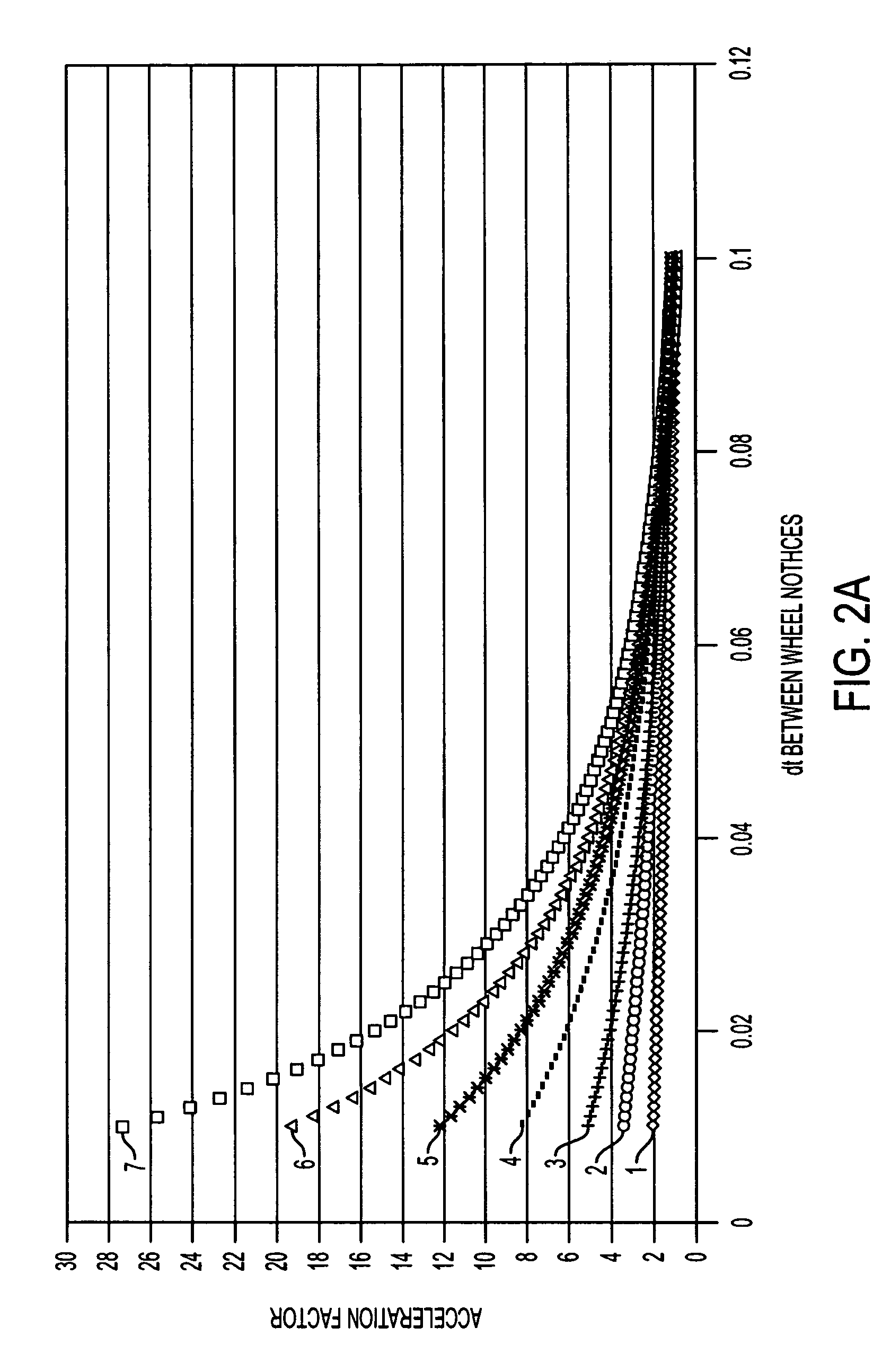Accelerated data navigation
a data navigation and accelerated technology, applied in the direction of electric digital data processing, instruments, computing, etc., can solve the problems of more than two pages, less satisfactory methods, and limited distance of the mouse wheel
- Summary
- Abstract
- Description
- Claims
- Application Information
AI Technical Summary
Benefits of technology
Problems solved by technology
Method used
Image
Examples
Embodiment Construction
[0024]To address the shortcomings of known scrolling devices as noted above, the inventors have designed an accelerated scrolling control that, in a sense, may be thought of as an automatic transmission for a mouse wheel or other user input device that may be used for scrolling or other data file navigation. In a wheeled mouse scrolling implementation, the system can adjust the control-to-display ratio between input and apparent motion on the screen based on how quickly a user turns the wheel. Accelerated scrolling increases the number of scroll messages based on the time difference between scroll events (e.g., notch clicks). The faster a user scrolls, the smaller the time difference between scroll messages. The scrolling algorithm measures this time difference and applies a corresponding gain. The smaller the time difference, the larger the gain. For example, in a slow stroke of a mouse wheel the time difference between notch clicks is larger compared to a fast stroke of the wheel....
PUM
 Login to View More
Login to View More Abstract
Description
Claims
Application Information
 Login to View More
Login to View More - R&D
- Intellectual Property
- Life Sciences
- Materials
- Tech Scout
- Unparalleled Data Quality
- Higher Quality Content
- 60% Fewer Hallucinations
Browse by: Latest US Patents, China's latest patents, Technical Efficacy Thesaurus, Application Domain, Technology Topic, Popular Technical Reports.
© 2025 PatSnap. All rights reserved.Legal|Privacy policy|Modern Slavery Act Transparency Statement|Sitemap|About US| Contact US: help@patsnap.com



